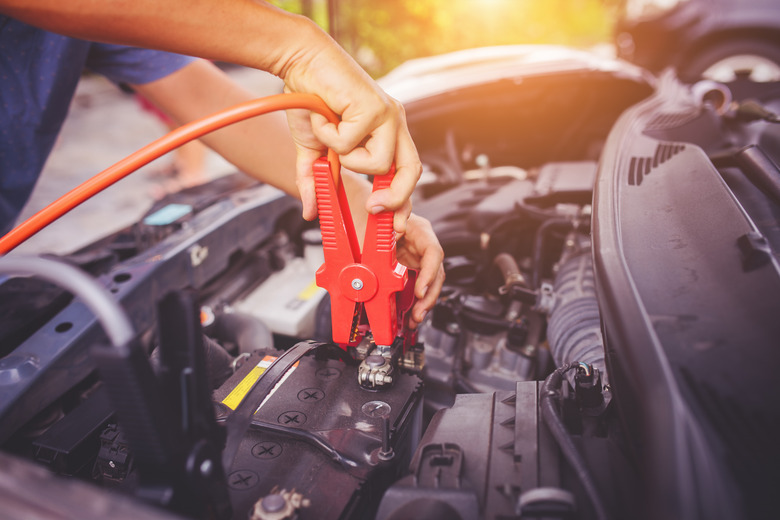How To Repair A Faulty Or Weak Cell In A 12-Volt Battery
A 12-volt battery in a vehicle stores and releases electricity utilizing two chemical reactions. The battery contains lead plates that are immersed in sulfuric acid. Efficient operation depends upon complete submergence of the lead plates in sulfuric acid electrolyte, the correct strength of the acid and the condition of the metal plates. Loss of acidic electrolyte, contamination and lack of regular recharging can upset the chemical balance of the battery. The repair of a faulty or weak cell within a battery involves the restoration of the chemical balance.
TL;DR (Too Long; Didn't Read)
If your battery hasn't been permanently damaged by sulfation, restoring a weak cell battery is as easy as monitoring and refilling its acid and electrolyte stores. Remember that battery acid is corrosive, and battery electrolyte is poisonous. Be sure to wear personal protective equipment and know what to do in the event of an acid spill.
Repair Preparations
Repair Preparations
Before you can repair your battery, you'll need to clean it and access the cells. To do so, remove all the loose dirt and oil from the top of the battery with a dry cloth, giving particular attention to the areas around the vent caps; these must be free of debris before you open them. Undo the vent caps on all the battery's cells, unscrewing them by hand or by using a large screwdriver. Place the vent caps in a safe place.
Checking Cells
Checking Cells
Shine the flashlight into each cell and note the depth of the electrolyte fluid. The fluid should cover the top of the lead plates within the cell by nearly a quarter of an inch. Any cells with lower levels may be unable to hold a full charge and are weak cells within the battery. Top up the level with battery water. Once done, refit the vent caps and charge the battery. Leave the battery for 12 hours and check it again.
Adding Acid
Adding Acid
If a cell is still faulty, remove the vent caps again. Don goggles and acid-resistant gloves. Insert a battery hydrometer into each cell to check the specific gravity of the electrolyte. A fully charged battery has a specific gravity of 1.265 and no cell should differ by more than 0.05. Add acid to any cell below the minimum specific gravity, following the manufacturer's instructions. Recharge the battery and test it again. If a cell is still faulty, it probably has been damaged by sulfation. The cause, low specific gravity of the electrolyte, converts lead and sulfuric acid into hard, lead-sulfate crystals. Take the battery to a technician who can advise whether to repair the battery or buy a replacement.
Things Needed
- Battery water
- Battery acid
- Flashlight
- Hydrometer
- Goggles
- Acid-resistant gloves
- Large screwdriver
- Dry cloth
Cite This Article
MLA
Robinson, David. "How To Repair A Faulty Or Weak Cell In A 12-Volt Battery" sciencing.com, https://www.sciencing.com/repair-weak-cell-12volt-battery-7843975/. 4 June 2018.
APA
Robinson, David. (2018, June 4). How To Repair A Faulty Or Weak Cell In A 12-Volt Battery. sciencing.com. Retrieved from https://www.sciencing.com/repair-weak-cell-12volt-battery-7843975/
Chicago
Robinson, David. How To Repair A Faulty Or Weak Cell In A 12-Volt Battery last modified August 30, 2022. https://www.sciencing.com/repair-weak-cell-12volt-battery-7843975/
